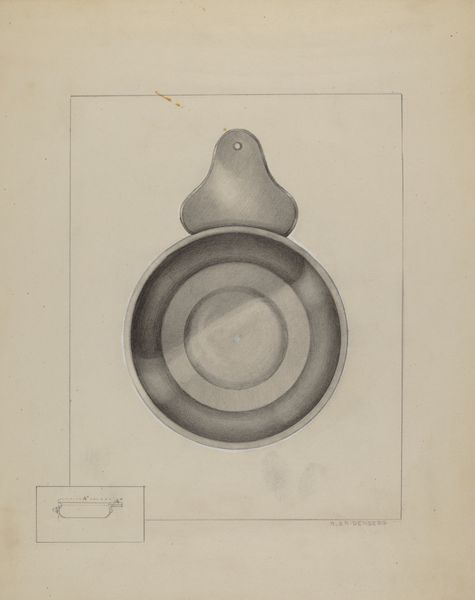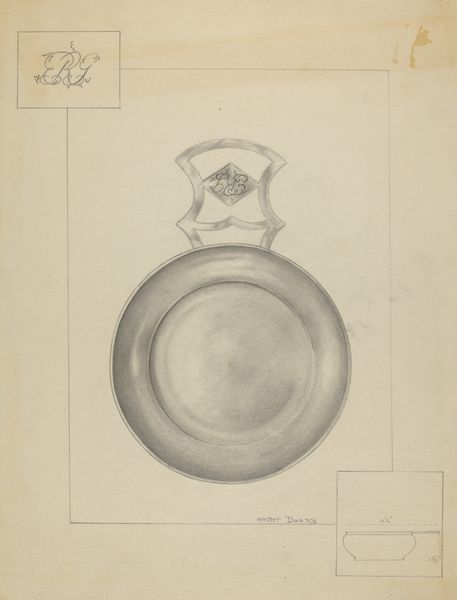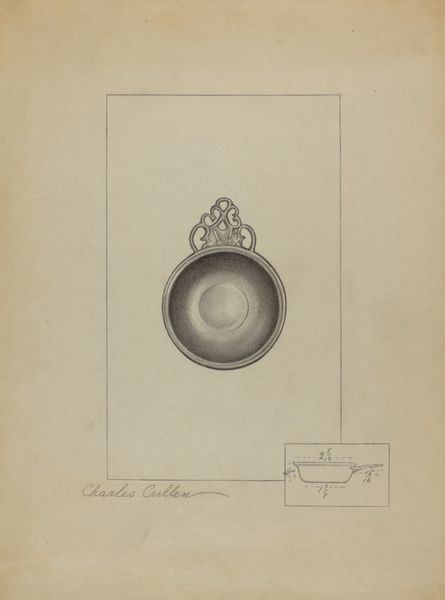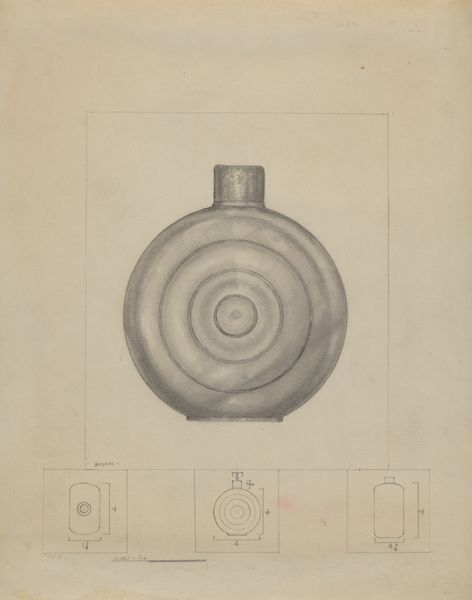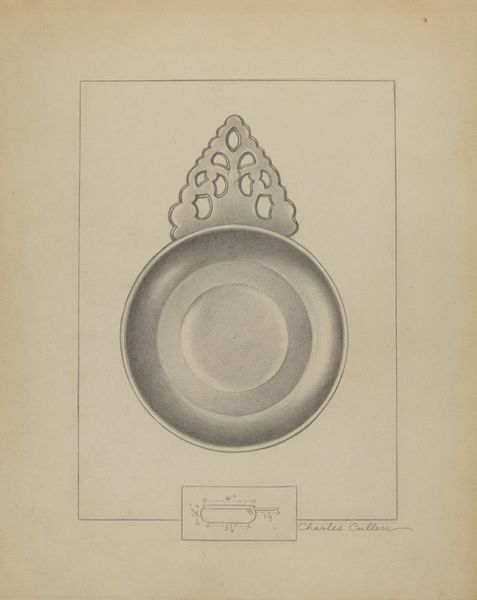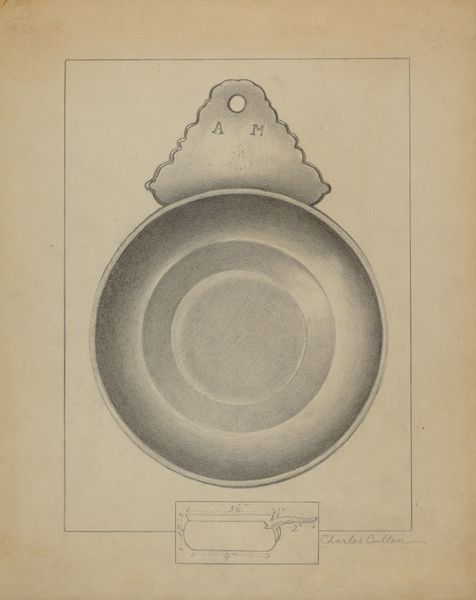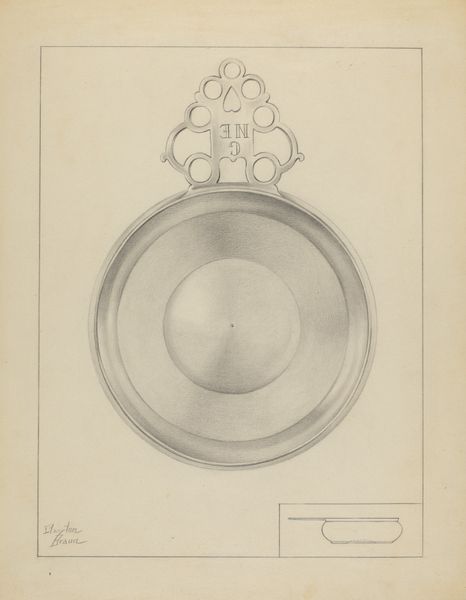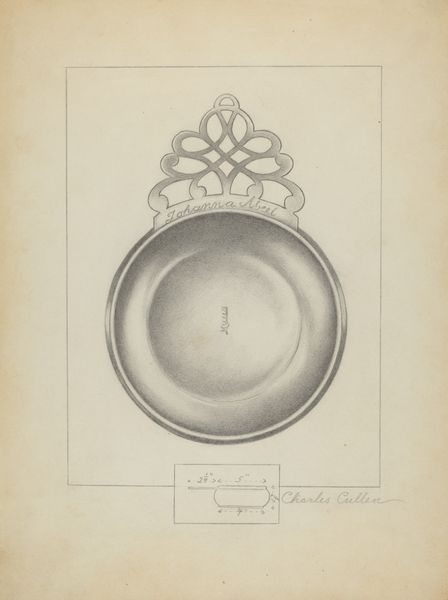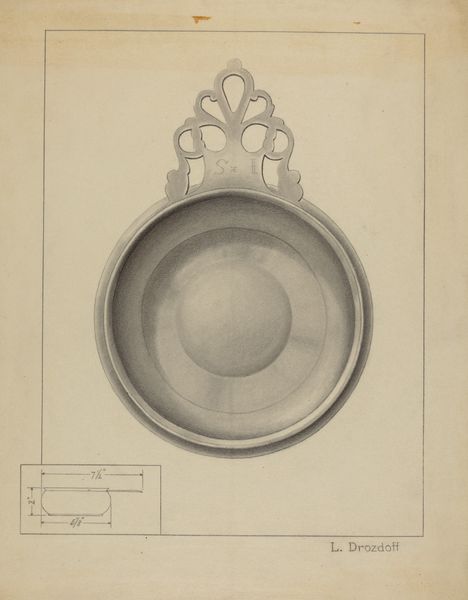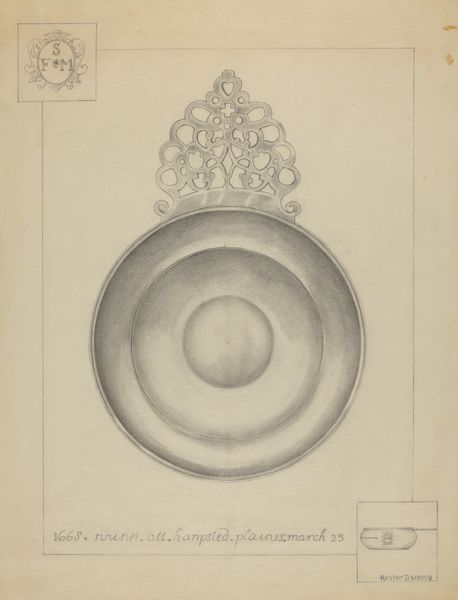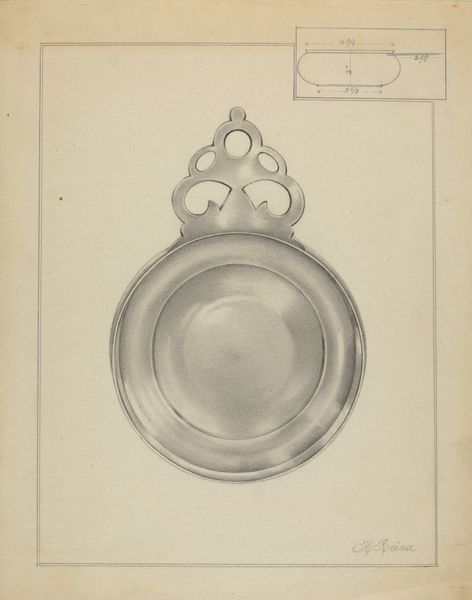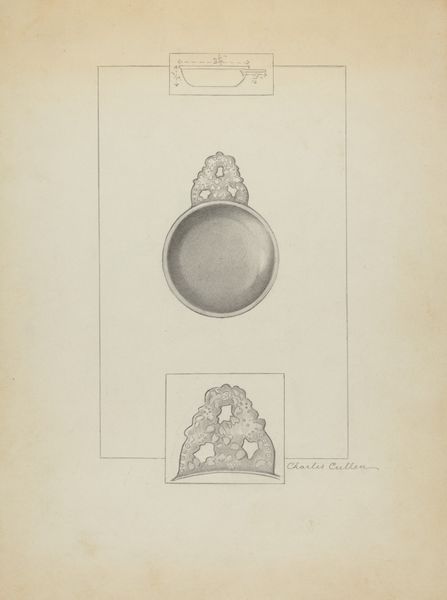
drawing, pencil
#
drawing
#
pencil
#
realism
Dimensions: overall: 28.8 x 21.7 cm (11 5/16 x 8 9/16 in.) Original IAD Object: 4" in diameter; 1 3/4" high
Copyright: National Gallery of Art: CC0 1.0
Art Historian: Let's turn our attention to this rather delicate drawing. We are looking at Eugene Barrell's "Pewter Porringer," created around 1936. It's a pencil drawing. Curator: Yes, and even in monochrome, I immediately pick up on the metallic sheen it’s trying to capture, almost fooling you into feeling its cool weight. It really emphasizes form, doesn't it? Simple, everyday. Art Historian: Exactly! During the 1930s, we saw a surge in this kind of meticulous documentation, partially spurred by economic realities, government projects, and an effort to preserve a material culture that felt increasingly threatened. Drawings like this allowed objects to circulate as representations, sometimes standing in when the real things became unavailable. Curator: A fascinating kind of artistic record-keeping then? The craft involved in pewter-making – the alloys used, the casting, and polishing – all get subtly honored here, even though we're only looking at a drawing. Look at how he rendered the handle—that decorative almost crown-like shape would’ve demanded great skill. Art Historian: Precisely! And note how even the dimensions are recorded in a separate schema on the top-left part. The inclusion of the measurements reinforces its utility; the artwork becomes not only representational but also instructive, maybe even reproducible. It reflects an appreciation of functionality married with aesthetic design. We can consider also the social implications; Who owned such an object, what social rituals were entwined with such a dish? Curator: I keep coming back to the sheen the artist managed to conjure. There's an attempt to transcend mere utilitarian depiction through a mastery of a quite mundane material. Think about the consumption context: possessing it in a world then shaped by class, aspiration, maybe deprivation, a certain humble dignity resonates. Art Historian: Yes, it shows us how seemingly simple objects can carry so much social and cultural meaning, speaking volumes about taste, status, and historical context. Curator: Ultimately it highlights our engagement with making; It's intriguing to me how the image preserves material labor. Art Historian: A remarkable visual record, that tells a multifaceted story about objects, artistic interpretation, and social commentary.
Comments
No comments
Be the first to comment and join the conversation on the ultimate creative platform.
